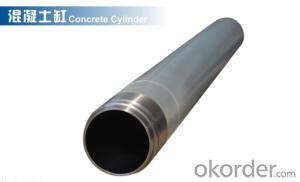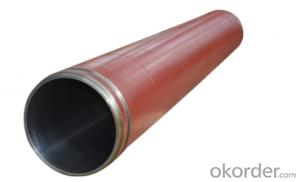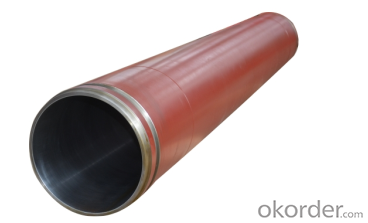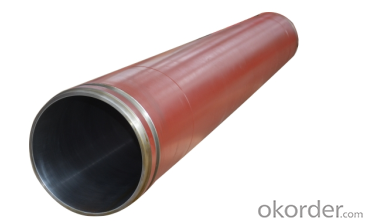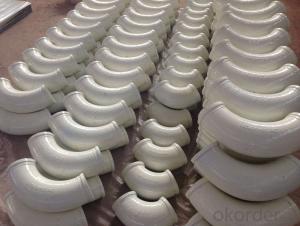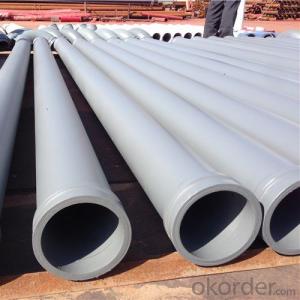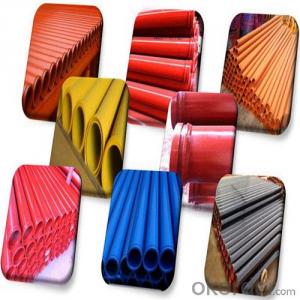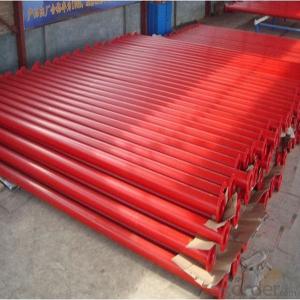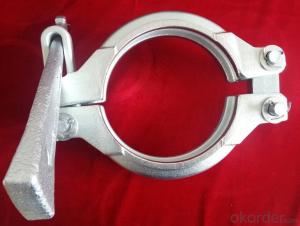DELIVERY CYLINDER(SANY ) I.D.:DN195 CR. THICKNESS :0.25MM-0.3MM LENGTH:1570MM
- Loading Port:
- Shanghai
- Payment Terms:
- TT OR LC
- Min Order Qty:
- 2 pc
- Supply Capability:
- 1000 pc/month
OKorder Service Pledge
Quality Product, Order Online Tracking, Timely Delivery
OKorder Financial Service
Credit Rating, Credit Services, Credit Purchasing
You Might Also Like
Packaging & Delivery
| Packaging Detail: | wooden case, seaworthy packing |
| Delivery Detail: | 15 days |
Specifications
Concrete Pump Delivery Cylinder DN230*2100
1. Capacity: 60,000~80,000cbm
2. Size: DN180, DN200, DN230..
4. Brand: PM, Sany,ZM
1. Material: C45
2. quenching and tempering to improve the hardness to HB241-280
3. inner wall chrome thickness is 0.25-0.30mm, hardness HV820-900.
4. Brand: SCHWING, PM, SANY, KYOKUTO, CIFA
5. Capacity: 60,000~80,000cbm
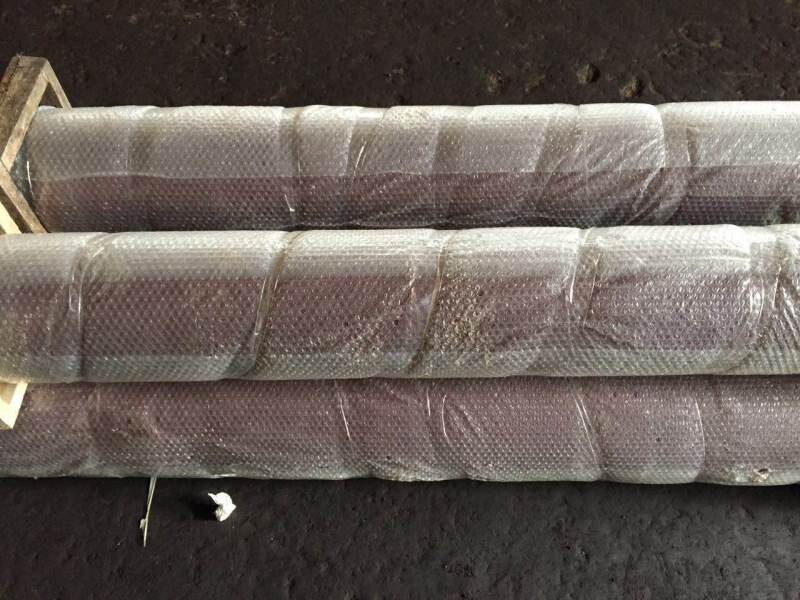
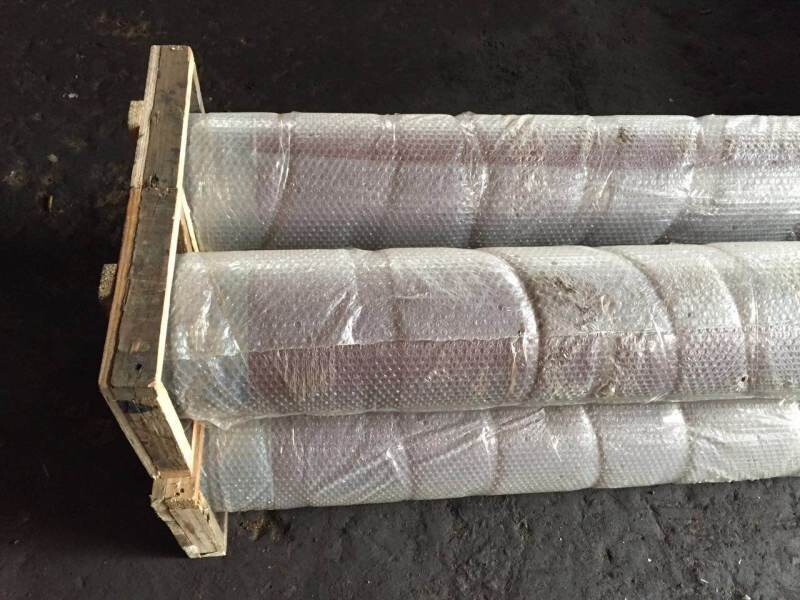
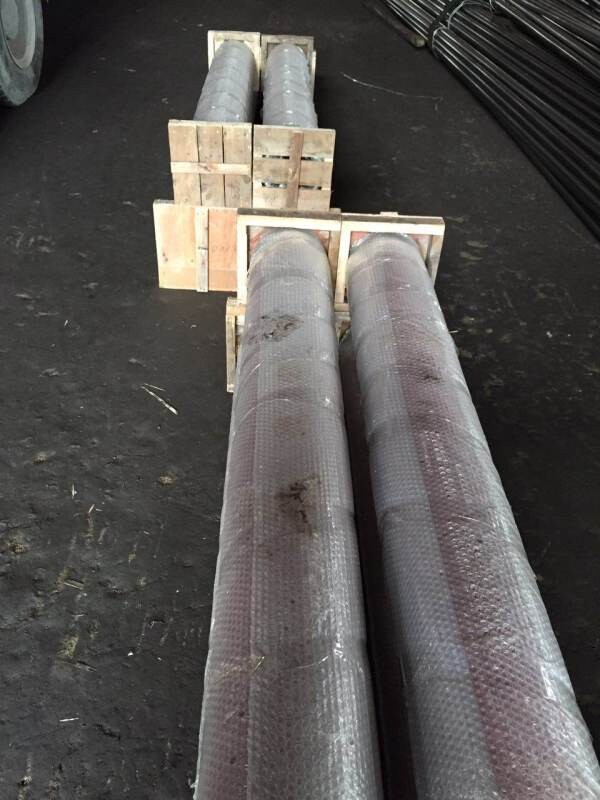
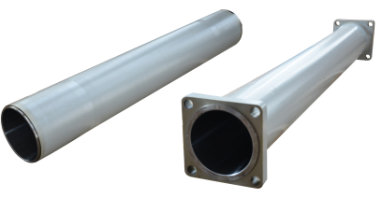
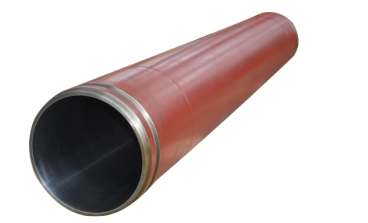
- Q: What are the signs of wear and tear in concrete pump spare parts?
- Some signs of wear and tear in concrete pump spare parts include: 1. Surface damage: Concrete pump spare parts, such as pipes and hoses, may show signs of surface damage like cracks, dents, or scratches. These can be indicators of wear and tear, especially if they are deep or extensive. 2. Corrosion: Concrete pump spare parts that are made of metal, like couplings or clamps, may show signs of corrosion over time. This can include rusting or pitting on the surface, which can weaken the part and affect its functionality. 3. Leaks: If there are noticeable leaks in the concrete pump spare parts, such as in the seals or gaskets, it can be a sign of wear and tear. Leaks can occur due to the degradation of the material or improper installation, and they can affect the efficiency and performance of the pump. 4. Reduced performance: Wear and tear in concrete pump spare parts can lead to a decrease in overall performance. For example, if the wear plates in the pump are worn out, it can result in reduced pumping capacity or increased energy consumption. 5. Increased noise or vibrations: If there is an increase in noise levels or vibrations during the operation of the concrete pump, it can be a sign of wear and tear in the spare parts. This can occur due to imbalances, misalignments, or loose components, which can affect the pump's performance and longevity. 6. Excessive wear on moving parts: Moving parts in the concrete pump, such as pistons or cylinders, can show signs of excessive wear and tear. This can include scoring or grooving on the surface, which can impact the smooth operation of the pump and lead to further damage if not addressed. Regular inspection and maintenance of concrete pump spare parts is crucial to identify and address any signs of wear and tear early on. Prompt replacement or repair of worn-out parts can help to prevent further damage and ensure the efficient and safe operation of the concrete pump.
- Q: How often should concrete pump pistons be inspected and replaced?
- Concrete pump pistons should be inspected and replaced regularly to ensure their optimal performance and prevent any potential malfunctions. The frequency of inspections and replacements will depend on various factors such as the type of concrete being pumped, the volume of concrete being pumped, and the operating conditions of the pump. As a general guideline, concrete pump pistons should be inspected and replaced every 500 to 1,000 hours of operation. However, this can vary depending on the specific pump manufacturer's recommendations, the quality of the concrete being pumped, and the maintenance and cleaning practices followed. Regular inspections should be conducted to check for any signs of wear, damage, or deterioration in the pistons. This includes examining the rubber seals, valve plates, and any other components that may affect the piston's performance. Any signs of cracks, tears, or excessive wear should prompt immediate replacement to prevent potential issues such as concrete leakage or loss of pressure. In addition to regular inspections, it is crucial to follow a preventive maintenance schedule that includes routine cleaning and lubrication of the pistons. This will help prolong their lifespan and ensure smooth operation. It is important to note that the specific recommendations for inspection and replacement intervals may vary between different pump manufacturers. Therefore, it is advisable to refer to the pump's operation and maintenance manual or consult with the manufacturer or a qualified technician to determine the ideal frequency for inspecting and replacing concrete pump pistons.
- Q: How often should concrete pump control panels be inspected and replaced?
- Regular inspections should be conducted on concrete pump control panels to ensure proper functioning and detect any potential problems or malfunctions. The frequency of inspections may vary based on factors such as pump type, operating conditions, and manufacturer recommendations. However, a general rule is to thoroughly inspect the panels at least once every six months or after every 500 hours of operation, whichever comes first. Trained professionals should perform these inspections, examining control panel components like buttons, switches, indicators, and wiring for signs of wear or damage. They should also test all functions and safety features to verify the panel's functionality. When it comes to replacement, it is crucial to adhere to the manufacturer's guidelines and recommendations. Typically, control panels have a lifespan of several years, but this can vary depending on factors like panel quality, frequency of use, and maintenance practices. If significant issues or failures are identified during inspections, prompt replacement of the control panel is important to ensure safe and efficient operation of the concrete pump. Ultimately, regular inspections and timely replacement of control panels are vital to minimize the risk of equipment failure, maintain safety on construction sites, and preserve the productivity and longevity of the concrete pump.
- Q: How often should concrete pump gearboxes be inspected and maintained?
- Concrete pump gearboxes should be inspected and maintained at regular intervals, typically every 6 to 12 months. However, the frequency may vary depending on the specific operating conditions and usage of the concrete pump. It is important to follow the manufacturer's recommendations and guidelines for maintenance to ensure optimal performance and longevity of the gearboxes.
- Q: How often should hopper agitator motors be inspected or replaced in a concrete pump?
- The frequency at which hopper agitator motors should be inspected or replaced in a concrete pump depends on various factors such as the usage intensity, operating conditions, and maintenance practices. However, as a general guideline, it is recommended to inspect hopper agitator motors regularly, at least once every three to six months. Regular inspections can help identify any signs of wear and tear, damage, or malfunctioning in the motor. This can include issues such as abnormal noise, excessive vibrations, overheating, or reduced performance. Additionally, it is important to check for any loose or worn out components, such as belts, pulleys, or bearings, which could affect the motor's efficiency and lifespan. If any significant issues or malfunctions are detected during the inspection, it may be necessary to replace the hopper agitator motor. The decision to replace the motor should be based on the severity of the problem, the age of the motor, and the cost-effectiveness of repairs compared to a replacement. Besides regular inspections, it is crucial to follow the manufacturer's recommendations for maintenance and lubrication of the hopper agitator motor. Proper maintenance practices can extend the lifespan of the motor and minimize the need for replacement. Ultimately, the specific frequency of inspections and replacement of hopper agitator motors in a concrete pump should be determined based on the specific circumstances and conditions in which the pump is operated, in consultation with the manufacturer's guidelines and recommendations.
- Q: What is the purpose of a concrete pump wear plate?
- The purpose of a concrete pump wear plate is to protect the essential components of a concrete pump, such as the housing and the rotor, from excessive wear and tear caused by the abrasive nature of concrete. It acts as a sacrificial layer, absorbing the impact and friction of the concrete, thereby extending the lifespan of the pump and reducing maintenance costs.
- Q: What are the elements of concrete pump and concrete pump truck selection?
- The amount of concrete pump used in the construction business can be calculated according to the concrete pouring amount, the actual transport capacity of the single machine and the construction operation time. For those concrete pumping projects with a large amount of disposable concrete, besides the calculation and determination, there should be a certain reserve. In addition, an annual output of 10~15 million M3 concrete mixing plant, 2~3 equipment needs to be equipped with concrete pump vehicles
- Q: What are the different types of concrete pump hoses?
- There are generally two types of concrete pump hoses: steel-reinforced hoses and fabric-reinforced hoses. Steel-reinforced hoses are stronger and more durable, suitable for high-pressure applications and long-distance pumping. Fabric-reinforced hoses are lightweight and flexible, ideal for smaller projects and shorter pumping distances.
- Q: How long does it take to replace a specific concrete pump spare part?
- The duration required to replace a specific spare part for a concrete pump can vary based on several factors. Initially, the replacement time will be influenced by the complexity and size of the part. Smaller and simpler parts can be swapped out relatively quickly, whereas larger and more intricate components may necessitate a lengthier process. Additionally, the availability of the spare part is a crucial consideration. If the part is readily accessible and in stock, the replacement procedure can be expedited. Conversely, if the part must be ordered or obtained from a supplier, there may be a delay in receiving it, thereby extending the overall replacement time. Moreover, the competence and experience of the individual or team carrying out the replacement will also impact the duration. Trained and skilled professionals are likely to complete the replacement more efficiently compared to those with limited knowledge or experience. Lastly, unforeseen complications or issues that arise during the replacement process can also affect the time required. It is possible that additional repairs or adjustments may be necessary, which could further prolong the replacement time. In conclusion, the duration for replacing a specific spare part for a concrete pump is dependent on the part's complexity and size, its availability, the expertise of the individuals performing the replacement, and any unforeseen complications that may arise. Therefore, it is challenging to provide an exact timeframe without taking these factors into consideration.
- Q: How can one determine the correct hardness and durometer rating for rubber components in concrete pump spare parts?
- Several factors must be taken into consideration when determining the appropriate hardness and durometer rating for rubber components in concrete pump spare parts. To begin with, it is crucial to have a thorough understanding of the specific application requirements of the rubber components. This entails considering factors such as pressure, temperature, and frequency of use. Additionally, it is important to assess the compatibility of the rubber material with concrete and any other chemicals that may come into contact with the components. Ensuring chemical resistance is vital for guaranteeing the longevity and durability of the rubber parts. Furthermore, the anticipated load and stress on the rubber components must be carefully analyzed. This includes evaluating the weight of the concrete, the force exerted during pumping, and the potential for impact or abrasion. Moreover, environmental conditions should not be overlooked. Exposure to sunlight, extreme temperatures, or harsh weather conditions can significantly impact the performance and lifespan of rubber components. It is also essential to consider the specific type of rubber material being used. Different rubber compounds possess varying hardness and durometer ratings. Seeking guidance from rubber manufacturers or suppliers who specialize in concrete pump spare parts can provide valuable insights and recommendations based on their expertise and experience. Ultimately, determining the correct hardness and durometer rating for rubber components in concrete pump spare parts necessitates a meticulous evaluation of application requirements, compatibility, load and stress factors, environmental conditions, and expert advice.
Send your message to us
DELIVERY CYLINDER(SANY ) I.D.:DN195 CR. THICKNESS :0.25MM-0.3MM LENGTH:1570MM
- Loading Port:
- Shanghai
- Payment Terms:
- TT OR LC
- Min Order Qty:
- 2 pc
- Supply Capability:
- 1000 pc/month
OKorder Service Pledge
Quality Product, Order Online Tracking, Timely Delivery
OKorder Financial Service
Credit Rating, Credit Services, Credit Purchasing
Similar products
Hot products
Hot Searches
Related keywords
